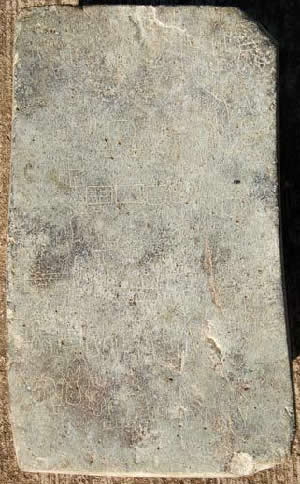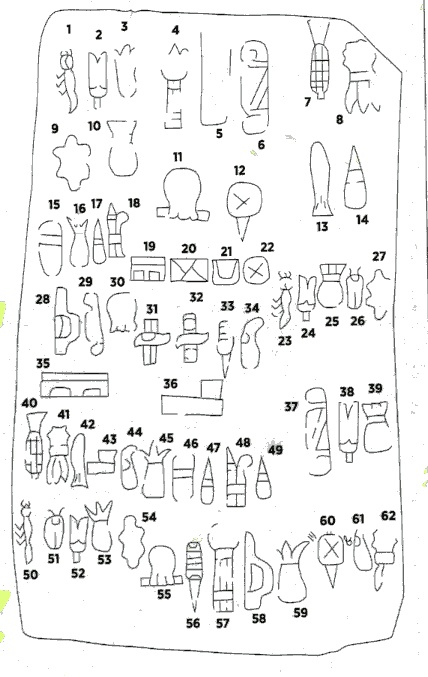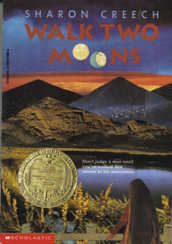Poetry & Song tool box
Overview
You can find poetry in your everyday life, your memory, in what people say on the bus, in the news, or just what's in your heart.
Introduction
This page includes a description of poetry, its elements, quality characteristics, suggested questions to help analyze its quality, instructional suggestions, links to sample quality poems to use to introduce to young children, sample choral readings, finger plays, and maybe the first poem in the Americas.
Poetry is a genre of literature with an intense emotional expression with a distinct style and rhythm of verse that can be analyzed by the poetic elements.
Genre includes nursery rhymes, ballads, epics, songs, poems, and lyrics.
Elements of Poetry
Poetry has an overall central theme or idea within each poem. Other elements include:
- Images - the mental pictures the poet creates through language.
- Diction - the selection of specific words.
Form - the arrangement of words, lines, verses, rhymes, and other features. - Cadence - A rhythmic change in the inflection of sounds from words being spoken. Sometimes referred to the flow of words.
- Couplet - two lines of verse that rhyme at the end and are thought as one unit.
- Meter - A rhythm that continuously repeats a single basic pattern.
- Rhyme - Words that end with similar sounds. Usually at the end of a line of the poem.
- Rhyming - Two lines of a poem together with the same rhythm.
- Rhythm - A pattern created with sounds: hard - soft, long - short, bouncy, quiet - loud, weak - strong.
- Stanza - A part of a poem with similar rhythm and rhyme that will usually repeat later in the poem.
- Verse - A line of a poem, or a group of lines within a long poem.
Quality Characterisics
- Imaginative
- Creative
- Descriptive and vivid language that often has an economical or condensed use of words chosen for their sound and meaning
- Meaning is enhanced by recalling memories of related experiences in the reader or listener
- Provokes thought
- Causes an emotional response: laughter, happy, sad …
- Uses figurative language (personification, similies, methaphors...)
- Imagery where the reader/listener creates vivid mental images
- Often has rhythm and rhyme
- Often includes words and phrases that have a pattern made with rhythm and rhyme.
- Story in verse
- Can have physical and grammatical arrangement of words usually enhance the reader's overall experience
Questions to ask to analyze & evaluate the quality of poetry
- Does it have figurative language and imagery?
- Does it create images? (pictures, sounds, smells, tastes, touching sensations)
- Is what the author says or doesn’t say helpful in creating imagery?
- Does it move from the familiar to the unfamiliar or unfamiliar to familiar in a manner that enlightens and/or amazes?
- Is it understandable? (literally, interpretively, and emotionally) Alone or with help?
- Does it appeal to me? To who else would it appeal?
- Does the poem touch people emotionally?
- Are words combined in a mixture that communicates both a literal and suggested meaning.
- Not so precise as to limit the imagination or so suggestive as to not communicate? (denotation and connotation).
- Does it get to the heart of an idea?
- Is it creative with language? Use language and words in interesting ways? (metaphors, similes, personifications).
- Are words used in a highly powerful manner? Is there a lot of zap with few words?
- Is it a language of simplicity?
- Does it sing to you? [sounds (alliteration, assonance, onomatopoeia), verse, rhythm, patterns, beat (words, phrases), rhyme (end of line, inline, and/or link rhyme)
- Does it include ideas that people can use?
Some children's thoughts about poetry
Children like to write poetry because they
- feel there are no limitations
- can be creative without taking risks
- don't need to worry about conventions (punctuation, complete sentences).
Children might not like to write poetry because they
- don't like to struggle with word choices
- don't like the struggle with a desire to be original
- don't want to risk creating something someone might not like
- don't have strategies to help be creative
- struggle with words (spelling, vocabulary, small repetooire of words)
- desire to have it rhyme, have rhythm,and/or a melody
Instructional ideas
A fairly easy instructional strategy to use with a poem is to read a poem and ask students to answer four questions, individually, in a group, or as a class:
- What do you think the poet was trying to share by writing the poem?
- What emotions are felt when the poem is read?
- What are three key words, phrases, or ideas in the poem. Be ready to explain why you believe your choices are key.
- Use your three words, phrases, or ideas to write a summary about the poem.
- Checklist to evaluate good poems
- Limirick introductory sequence
- Walk Two Moons and activity for Longfellows poem
- Composers
- Poem List
- Poets
Poem Samples
- My poem book collection - 26 assorted poems I illustrated for school assignment
- Attitude & Life - Charles Swindoll
- The Butterfly's Ball and the Grasshopper's Feast - William Roscoe (1807)
- Crocodile - unknown
- Over in the Meadow - Olive A. Wadsworth (Katherine Floyd Dana) First published: 1870
- Rose - Galloway
- Song lyrics: Breakaway - Kelly Clarkson
- Snowy Evening - Robert Frost
- Valentines day assorted poems
- We & They
Choral reading samples
- Fireflies
- Jack's House
- Three Little Pigs Read Aloud or Sing Along or Chant Along. Mother Goose related
- Whirlygigs
Early writing in America 900 BCE
Maybe first American poem... It is thought to be a poem as the images repeat in a pattern similar to the pattern of Mesoamerican poetic couplets. Scientific American July 2015


Checklist for Analyzing Poetry
Evaluator:
|
yes no | Supporting evidence |
|---|---|---|
| Does it have figurative language and imagery? | ▢ yes ▢ no |
|
| Does it create images? (pictures, sounds, smells, tastes, touching sensations) | ▢ yes ▢ no |
|
| Is what the author says or doesn’t say helpful in creating imagery? | ▢ yes ▢ no |
|
| Does it move from the familiar to the unfamiliar or unfamiliar to familiar in a manner that enlightens and/or amazes? | ▢ yes ▢ no |
|
| Is it understandable? (literally, interpretively, and emotionally) Alone or with help? | ▢ yes ▢ no |
|
| Does it appeal to me? To who else would it appeal? | ▢ yes ▢ no |
|
| Does the poem touch people emotionally? | ▢ yes ▢ no |
|
| Are words combined in a mixture that communicates both a literal and suggested meaning. Not so precise as to limit the imagination or so suggestive as to not communicate? (denotation and connotation). | ▢ yes ▢ no |
|
| Does it get to the heart of an idea? | ▢ yes ▢ no |
|
| Is it creative with language? Use language and words in interesting ways? (metaphors, similes, personifications). | ▢ yes ▢ no |
|
| Are words used in a highly powerful manner? Is there a lot of zap with few words? | ▢ yes ▢ no |
|
| Is it a language of simplicity? | ▢ yes ▢ no |
|
| Does it sing to you? [sounds (alliteration, assonance, onomatopoeia), verse, rhythm, patterns, beat (words, phrases), rhyme (end of line, inline, and/or link rhyme)] | ▢ yes ▢ no |
|
| Does it include ideas that people can use? | ▢ yes ▢ no |
|
Limerick Plan
Outcomes
- Literature - Identify Limerick as a genre. Know it as a subcategory of poetry.
- Writing - Write and review vocabulary. Recognize as short writing. Use words to communicate a message. Recognize Limerick as a form of poetry.
- Word Study - Develop language acquisition skills with the use of a dictionary, thesaurus, or internet search. Use words from oral vocabulary and personal lists.
- Reading - fluency - Read fluently .
- Speaking - recite or read poems.
- Visualization - Create pictures or compose photographs to communicate a message .
- Creative thinking and responding - Discover patterns of the limerick genre, brainstorming ideas for a limerick and list rhyming words. Brainstorm and select meaningful powerful words to include in their writing that comunicate their ideas accurately and powerfully.
- Creative writing - write poetry as limericks.
- Media Literacy -
Compose limericks with text, illustrate limericks with digital pictures or art, and record recitations and combine these pieces into a multimedia collection.
- Critical Literacy/Listening and Thinking Skills - Share their multimedia produced limerick collection with the class, listening, and share positive critical feedback.
Background information to facilitate learning / implement limerick instruction
Limerick Genre Pattern -
- A limerick usually has 5 lines,
- With a rhythm of two short or unaccented followed by one long or accented syllables (anapestic),
- Where lines 1, 2, and 5 rhyme , and lines 3 and 4 rhyme , and
- Usually written in the past tense.
Can be thought of as:
da DUM da da DUM da da DUM
da DUM da da DUM da da DUM
da DUM da da DUM
da da DUM da da DUM
da DUM da da DUM da da DUM
Frameworks to assist student learning
Limerick Sample:
There was a young girl by the sea.
Who performed a re mark able curtsy;
She twirled round and round,
Till she spun under ground.
Which dis tressed every one who could see.
Framework number one
There once was a __________ from___________.
Who was __________ and (past tense verb) ____________________.
When __________________________________.
He or she replied ____________________________________.
That ____________ from ___________________.
Framework number two
I once met a _______________ from ____________.
Everyday s/he ________________ and _______________.
But whenever s/he _______________.
The ___________________________ _____________.
That ________________________ from _______________.
Focus Questions
- What is poetry?
- What is a limerick?
- What do you notice about this poem?
- What words can you think of that describe places?
- How many words can you think of that rhyme with those places?
- How could you create a Limerick or poem about a place?
Vocabulary - depends on Limerick or what might want it to include.
Evaluation criteria maybe use the checklist for analyzing poetry ...
Instructional Procedure
- Read aloud - a few Limericks as a hook. Could use selections - online source such as - Poetry-online.org or selections in Isaac Asimov’s Limericks for Children.
- Give or have students find a written limerick and have them determine what they think the rules of Limerick writing are.
- Assistance may be offered for some students by providing all or parts of a framework to assist their writing.
- Optional steps - --
- Have students brainstorm and write two or three places they have or would like to live or visit.
- Have them choose 2 places from their list that have rhymes or they may want to select additional places.
- Continue by having them “brainstorm” rhyming words for their locations and write them underneath the place names. Encourage listing words that provide colorful descriptions or that describe a particular aspect of that place. May want to make a rhyming word wall or add them to current word wall or journal...
- End of optional ---
- Students can use what they discovered about the pattern of a Limerick to create their own Limerick. Pattern - usually 5 lines, with a rhythm of two short or unaccepted followed by one long or accented syllables (anapestic), where lines 1,2 and 5 rhyme, and lines 3 and 4 rhyme, and usually written in the past tense.
- Ask students to create their own limericks.
- Students brainstorm ideas alone or in pairs or small groups for their own limerick.
- Have students use their limerick to create a multimedia presentation with a written and oral form of their limerick that they read, record, and illustrate as a digital multimedia photo story gallery.
Walk Two Moons - Longfellow Poem analysis
Also - Journal suggestions

The Tide Rises, the Tide Falls;
The tide rises, the tide falls,
The twilight darkens, the curlew calls,
Along the sea-sands damp and brown,
And the tide rises, the tide falls.
Darkness settles on roofs and walls,
But the sea, the sea in the darkness calls,
The little waves, with their soft, white hands,
Efface the footprints in the sands,
And the tide rises, the tide falls.
The morning breaks; the steeds in their stalls
Stamp and neigh, as the hostler calls,
The day returns, but nevermore
Returns the traveler to the shore,
And the tide rises, the tide falls.
- Describe your personal reaction to this poem ... What does it say to you?
- Form a literature circle and reflect, discuss, and document your collective responses to the following questions. (Each member make a copy of the responses on a sheet of notebook paper to put in your portfolio.)
- Why does this poem disturb Sal so much?
- How was Sal's mother a traveler?
- What is the shore?
- Why the repetition of the phrase, The tide rises, the tide falls?
- How is Sal a traveler?
- What is she looking for?
- Literature home
- HoB home